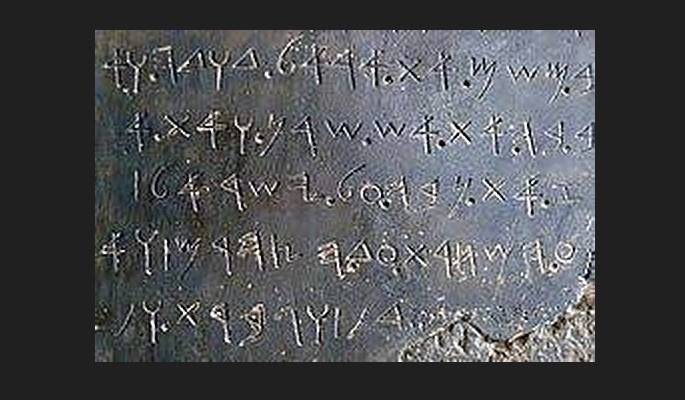Photographic technology has enabled researchers to verify that the events recorded on the stone correspond to the historical account in the Book of Kings.
By United with Israel Staff
The Mesha Stele, a basalt stone that contains chronicles by Mesha, King of Moab during the late 9th century BCE, was found in 1868 in Jordan, east of the Dead Sea and site of the ancient city of Dibon, capital of Moab.
Scholars had suspected that the writings, in the extinct language of the Moabites, describe events corresponding to the Book of Kings in the Tanach (Hebrew Bible, Prophets and Writings), including references to the Israelite god, the “House of David” and the “Altar of David.”
However, the section that included the historical account surrounding King David was damaged and therefore could not be verified – at least not until now.
A “squeeze” (papier-mâché impression) of the full stele had been obtained just prior to its destruction. Pieces of the original stele containing most of the inscription were later recovered and pieced together. The remainder of the stele was reconstructed from the squeeze
Thanks to photographic evidence, researchers have confirmed that the stone indeed does contain references to the biblical King David (2 Kings, Chapter 3), according to an article titled “Mesha’s Stele and the House of David” published recently in the Biblical Archaeology Review.
The Mesha Stele details the victories of King Mesha of Moab over the kingdoms of Israel and Judah, the magazine reports.
“In 2015, a team from the West Semitic Research Project of the University of Southern California took new digital photographs of both the restored stela and the paper squeeze. The team used a method called Reflectance Transformation Imaging… this method is especially valuable because the digital rendering allows researchers to control the lighting of an inscribed artifact, so that hidden, faint, or worn incisions become visible,” wrote researchers Andre Lemaire and Jean-Philippe Delorme.
The stele has been part of the collection of the Louvre Museum in Paris since 1873. In 2018, the Louvre projected light onto the high-resolution images, with the result being a much clearer image, enabling verification of the contents.
Linguists have also noted the strong similarity between the Moabite and Hebrew languages.
Send 'Warm Winter' Care Packages to Israeli Soldiers - They are Cold!
We are honored to thank the young men and women of the IDF who risk their lives every day to defend the citizens of Israel.
Join us in sending winter care packages and personal notes of support to Israeli soldiers who are out in the cold all day.
Warm up a soldier's heart with essential winter wear including fleece jackets. Keep an entire unit warm by ordering 10 packages... The soldiers truly appreciate your love and concern!

